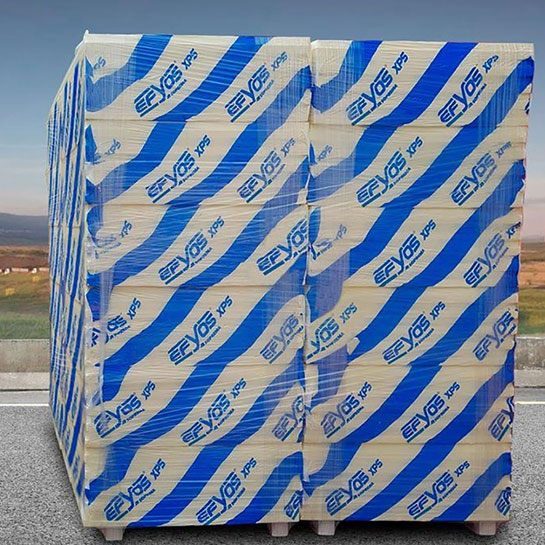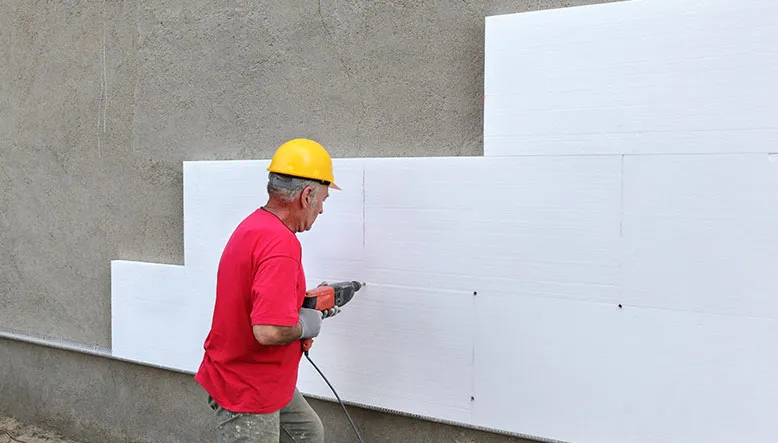Extruded polystyrene, also known as XPS, is a material widely used in construction. Its popularity has been growing steadily in recent years thanks to the benefits it offers to the industry. In this article, you will learn a little more about this product.
What is extruded polystyrene?
It is a rigid foam sheet obtained by melting plastic resin with a number of other additives. This mixture achieves a very compact result and is considered a closed bubble structure (it contains 5% air). It was first manufactured in 1941 by the Dow Chemical company after its development by the Swedish scientist C. G. Munters and in the 2000s onwards, it evolved with improvements in thermal efficiency and water resistance.
Reasons to use polystyrene
The increasingly frequent use of this type of polystyrene is due to the properties it provides. There are multiple reasons for you to bet on this material in your work or reform, these are some of the most important.
Durability
This product withstands wear and tear very well and has a long service life of up to 50 years. This is due to the fact that the passage of time does not cause it to lose its properties.
In addition, its structure allows it to support large amounts of weight. This means that it can be installed on the floor of terraces or on flat roofs, as it has no problem in withstanding the continuous transit of people.
Low fire spread
Although it incorporates the flame retardant label, it has good fire resistance, which makes this material even more interesting. Since it has no air inside, it reduces the speed of flame propagation. This helps to control fires and minimize the damage they can cause.
Thermal and acoustic insulation
It is one of the most thermally efficient options. You can install it on all types of surfaces, both interior and exterior, which gives you great versatility. It also minimizes the propagation of noise, as it acts as an acoustic inhibitor. Undoubtedly, both properties make it an ideal material for the building envelope.
XPS (extruded polystyrene) thermal insulation is highly efficient thanks to its low thermal conductivity (0.027-0.035 W/mK), which minimizes heat loss in winter and maintains coolness in summer.
Its closed structure makes it resistant to moisture, preventing leaks and degradation over time. In addition, it is a lightweight material , easy to install and highly resistant to compression, making it ideal for floors, roofs and facades. Its great durability guarantees its effectiveness for decades without losing insulating properties.
Compatible with other insulation systems, XPS improves energy efficiency and reduces air conditioning costs in any type of construction.
Does not absorb water
Water absorption is almost null, this property makes it perfect for outdoor use. In addition, it does not generate humidity and is hygrothermal, that is, it does not allow the passage of steam.
Simple installation
The installation process is quick and easy. It is usually carried out with a combination of adhesive mortar and mechanical fasteners. This procedure avoids the creation of joints that can cause the appearance of thermal bridges. By opting for it, you choose a fast, efficient and fairly clean job.
Low maintenance
Its durability and resistance to wear and tear means that it does not require specific maintenance work, so you will not have to worry about it. Also, in case of damage at any point, it can be cut and replaced only in that area. This clearly reduces repair costs.
Adaptability to the structure
The ease with which it can be cut and the type of installation helps it to adapt to all types of structures. Corners, protrusions or curvatures are not an impediment.
Uses of this material
This material combines high mechanical strength with a very good insulating capacity. On the other hand, we must not forget its resistance to water. These aspects, and those we have already mentioned, make it a very popular alternative for certain jobs.

Waterproofing of roofs
Its use is very common to insulate roofs, especially when making inverted roofs. Polystyrene protects the waterproofing material from sudden temperature changes. Degradation is lower and replacement due to wear and tear is much more economical. The slab and gravel (the latter on flat roofs) are laid on top of it.
Facade paneling
If a facade is to be thermally insulated from the outside, polystyrene is usually the first choice. It is easy to install and galvanized steel frames can be used for fastening. The work is simple and economical, and various coating options can be added to achieve a good aesthetic finish.
Foundations
Parts of structures that are in direct contact with the ground, such as garages or basements, are more prone to leaks or other disturbances. These sheets placed along the entire perimeter improve thermal insulation and prevent water condensation.
Other uses beyond construction
Beyond the world of construction, these panels are used in the manufacture of objects where high insulating capacity is required. Cold storage rooms or trucks with a thermal box are two good examples of the versatility of this material.
Recommendations to buy extruded polystyrene
Acquiring this material is not too complicated, but it is crucial that you take into account a series of recommendations to make the right choice:
- Thickness: There are different sizes of this material. The thicker they are, the more their properties are enhanced, but they are also somewhat heavier. Think about the main characteristic you are looking for.
- Color: In the market you can find it in a wide variety of colors. You can use it as a finish if you want for a wall or ceiling and save a little money.
- Measurements: The sheets have specific dimensions and are sold by square meters. Think about the work to be done and add a margin for trimming and finishing.
- Trusted company: Purchase this material from a reference company such as ours that guarantees the quality and efficiency of the product.
- Experts: Do not hesitate to consult with professionals if you have any questions or need a recommendation.
If you are looking for an efficient and easy-to-install insulating material, extruded polystyrene is your best option. This product has a series of properties that make it the most chosen alternative for insulating foundations or waterproofing roofs, among other uses. When purchasing it, it is important to pay attention to the thickness and rely on an expert supplier in the sector. Take a look at our store!
Why is extruded polystyrene (XPS) a good thermal insulator?
XPS has low thermal conductivity (0.027-0.035 W/mK), which helps maintain the interior temperature, reducing heat loss in winter and heat in summer.
Does XPS absorb water or humidity?
No, its closed-cell structure prevents water absorption, making it ideal for wet areas such as basements, decks and foundations.
Where is XPS most commonly used in construction?
It is used in facades, roofs, floors, foundations and cold storage rooms, due to its high thermal, mechanical and humidity resistance.
What is the difference between XPS and EPS (expanded polystyrene)?
XPS is denser, stronger and has lower water absorption, while EPS is cheaper and lighter, but less efficient in insulation and strength.
Is XPS an environmentally friendly material?
XPS is recyclable and contributes to the energy efficiency of buildings, although its production involves petroleum derivatives. Today, more sustainable versions with less environmental impact are available.


